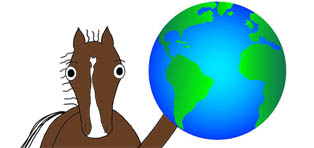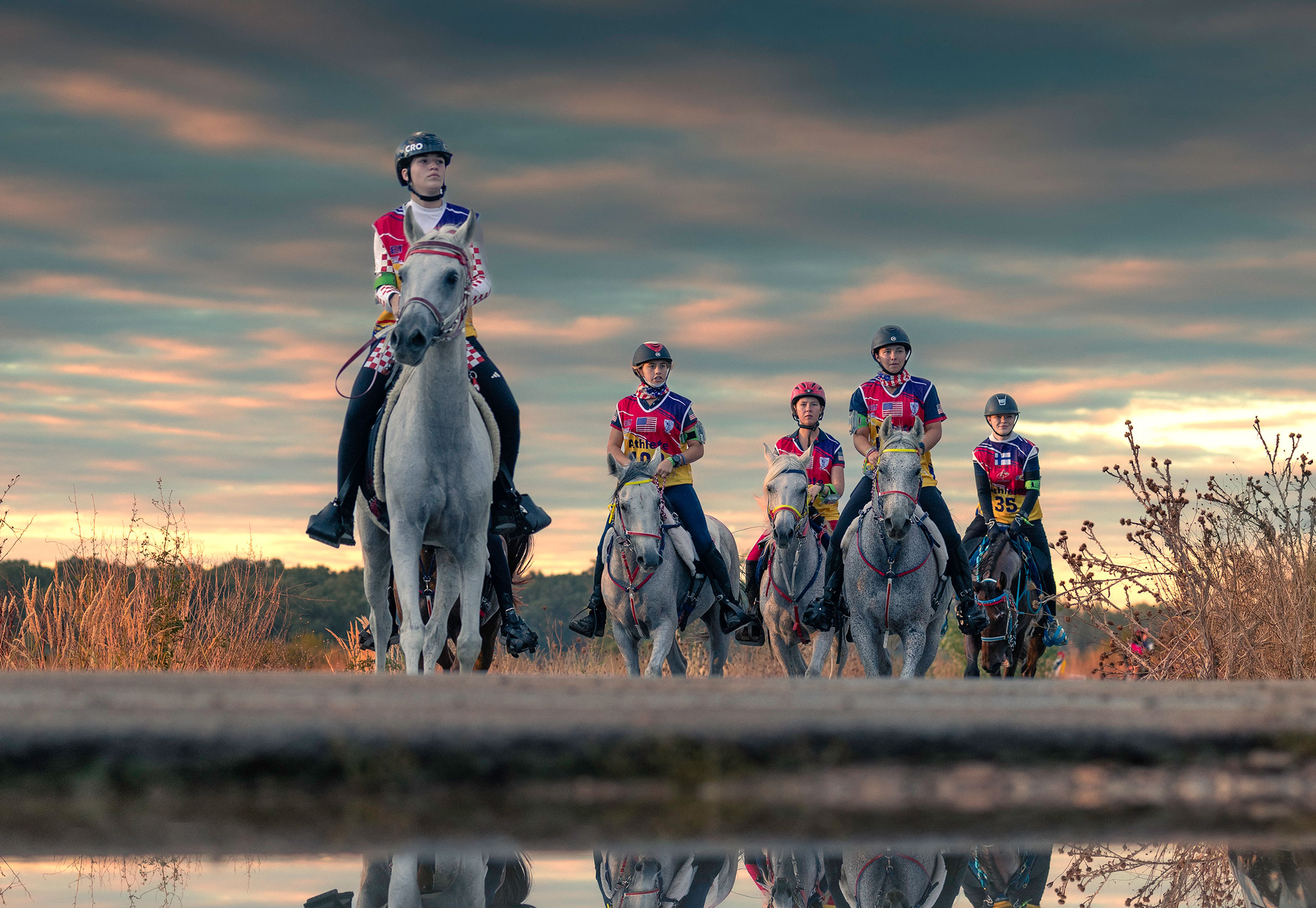
August 4 2011
by Leonard Liesens
China is developing at an incredible rate. There exists now a new class of wealthy, very wealthy entrepreneurs. They are interested in various things to occupy their life and spent their money. Equestrian sports are one of their occupations. China has a huge amount of horses, mainly in the Northern provinces, along the Mongolian and Kazakhstan borders, where nomadic people use the horse in their daily life. These horse are hardy ones, used to extreme climates, able to survive in harsh conditions, in the winter, digging into the snow to find some grey grass. Their horses are small, but with a correct conformation most of the time. The back are strong and able to carry a heavy riders on long distances. Traveling across the grasslands and the mountains has been their life since the era of Genghis Khan. Now, they are probably not the same anymore. They are taller, they have been mated with foreign blood, from Russia (Don and Orlofv). These horses are gentle, courageous and willing to work. Of course they are not treated the way we use to treat ours and they have a harder life. But they look good, the ridden ones (mostly the geldings are ridden) look a bit skinny for my taste (even if we were in a favorable period with plenty of grass). The breeding stock looked good (see photos of the herd of horses brought to the racetrack for the Mongol rodeo).
About the endurance race. They try hard. Mr Wu(manager of the Chinese Equestrians website) is working hard to organize all (or most of) competitions across China, trying to get everywhere the same model. Riders need probably a better education for riding long distance and coping with the art of pacing. I saw that also in other parts of the globe. They are willing to learn. Like us thirty years ago, they also learn from their mistakes. The horse from Xingjian (and also probably from Inner Mongolia) can do well with appropriate conditioning and pacing. Probably this kind of horse is limited in speed and will not be able to reach the speed of our Arabians, but 16..18 km/h doesn't seem to be a problem for well-trained subjects. That would be very interesting to condition and train them our way and see the results on tests. Introducing Arabian blood could be a plus of course, but China will have to wait for one generation to see how it goes. Will the part-bred survive in the same conditions? Will they not loose their rusticity? Will the owner accept to change a bit the training and maintenance regimen? Obviously, importing horses from abroad could be a quicker solution. But in the same time, the 'know-how' must be imported as well.
The race was very well organized. Almost like the European model, except the veterinary inspection. More metabolic parameters should be assessed and the gait's checking should be more strictly enforced.
Race time: 140 horses took the start. They went fast, too fast on the first stage. The three stages were drawn according to the model "Go to one point and head back". That's OK with cautious and experienced riders, but here many were letting the horse pick the speed(too high) -or even pushed them- at the return and were stuck at the vetgate (many not able to recover on time to 64BPM) for a very long time. And of course on the 2nd stage, many had to push to leave the venue, up to the return point where the horse understood that we was heading back. Same scenario as during the first loop. Only 38 completed. As far as I'm concerned: I took a conservative start, being the last all the way during the first stage. This allowed me the pass several dozens horse at the vetgate. During the second stage, at half way, my horse gaits were not the best. I dismounted and noticed the reason : "Actually, I arrived at the venue just one hour before the start. I was presented with one horse but he had some swelling along one suspensory and I asked to see another one. This one looked ok, but by lack of time, I could not check the hind feet. My mistake, always the rider's mistake!". His hind feet were very very asymmetric, probably 1.5cm difference between left and right part, forcing the horse to put his feet to the inside when walking or trotting. Of course, after 50km of this, he was sore. So I gently walked him back to camp and pulled.
The next days, we could attend the Mongol rodeo and the various activities and have a walk across the town. Very nice people, curious of our European look, everyone willing to be photographed with us. Very nice children, many saying the only English words they retained from school "Hello, how are you". Funny.
Also every noon and evening, eating and drinking and socializing. Amazing. Tasting the Mongolian food and the Chinese one. Accepting toasts from everyone during the whole dinner (numerous courses all served together on the Chinese round table). Of course, as special guests, we were the target of all toasts:-) A kind of Chinese vodka, 40degrees, during four days in a row, that's another kind of endurance...
I want to thank our guests for this incredible welcome and all the good time.
Photo gallery here:
http://endurance-belgium.com/photos/bayinbuluke11/index.html



No comments:
Post a Comment